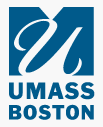Home > CIEE > Vol. 3 > Iss. 1 (2016)
Abstract
This case study describes how a MOOC, funded through an NSF grant, was used to create and assess faculty professional development. The MOOC, designed and developed using a backward design process, guided participants through an online project-based learning experience that integrated learning about the flipped classroom and about how to flip a classroom as the participants designed flipped teaching materials. The course structure involved an introduction to flipped teaching and learning content, experimented with flipped ideas and concepts, and emphasized reflection and sharing of experiences with peers.
Although mentoring faculty in flipped pedagogical design was the primary MOOC goal, the project also provided insights about assessing the MOOC and the personal learning experiences of MOOC participants. MOOC developers concluded that, depending on the purpose of the MOOC, course designers and instructors may need to rethink what they are assessing, and broaden their perspectives regarding how to assess what is important. Closing the assessment loop and monitoring continuous improvement may be alternative strategies for assessing learning, boosting MOOC effectiveness, and documenting conceptual change.
Keywords
MOOC, faculty development, flipped classroom, flipped teaching, course design, backward design
Recommended Citation
Ziegenfuss, Donna Harp
(2016)
"Closing the Loop: Building Synergy for Learning through a Professional Development MOOC about Flipped Teaching,"
Current Issues in Emerging eLearning: Vol. 3:
Iss.
1, Article 7.
Available at:
https://scholarworks.umb.edu/ciee/vol3/iss1/7
